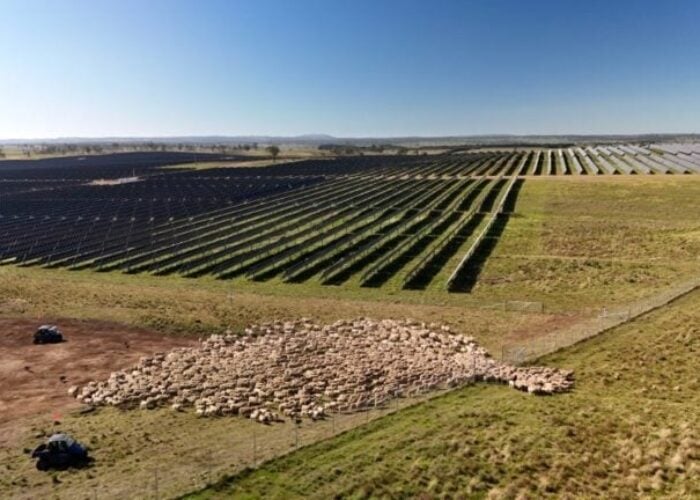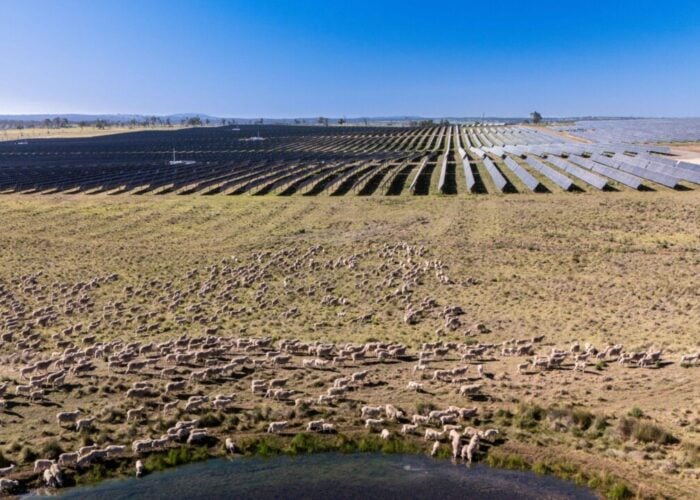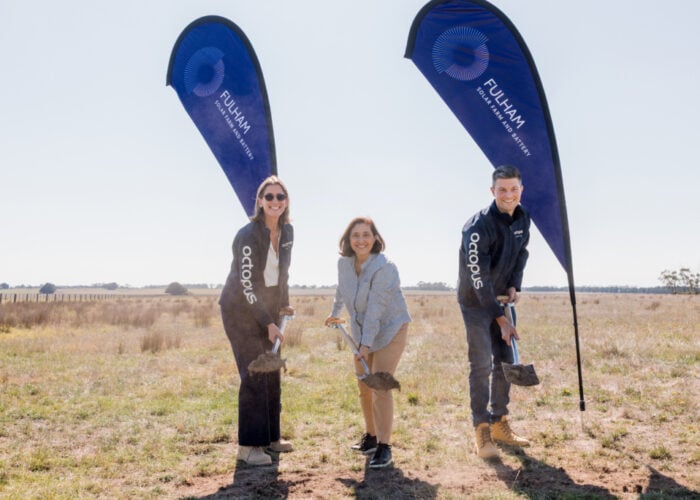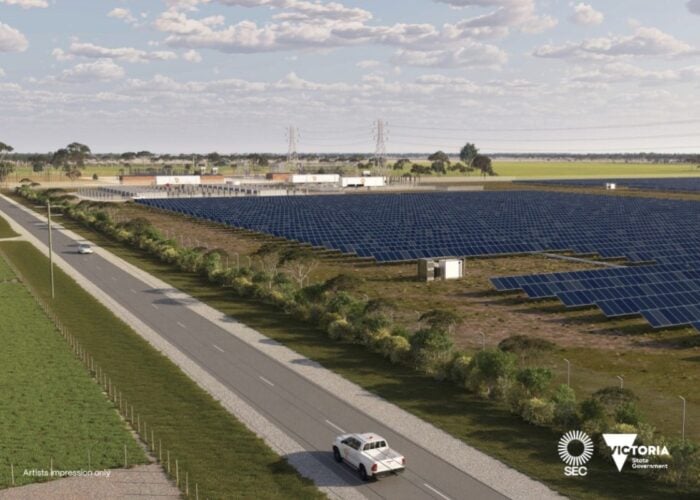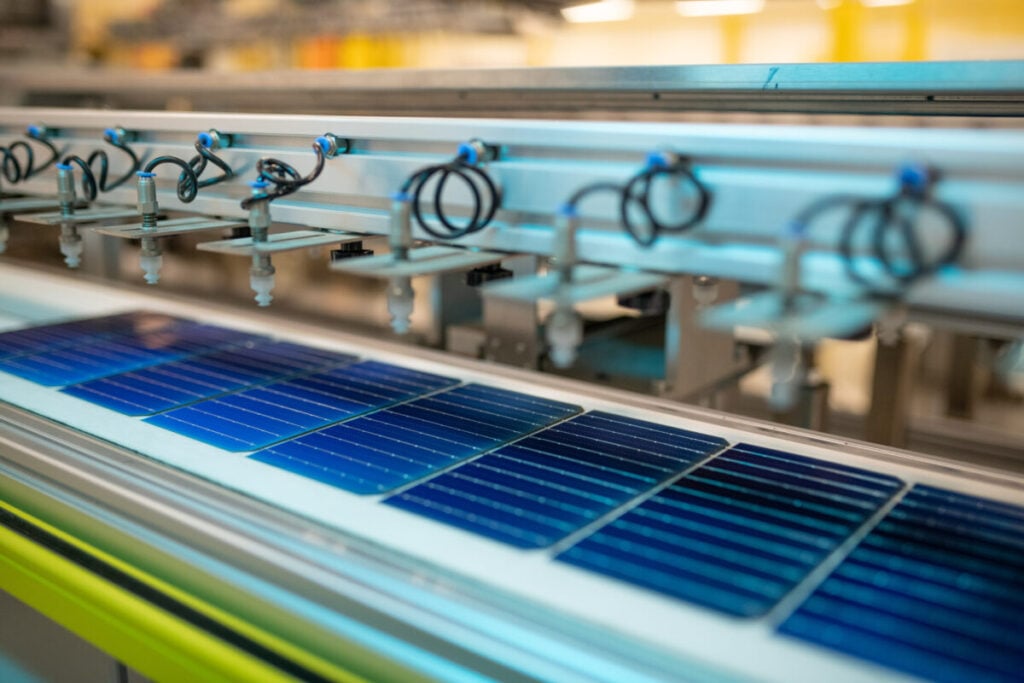
The Australian government is about to launch the first round of a programme designed to stimulate domestic PV manufacturing and support the country’s clean energy goals. George Heynes reports on the prospects for an initiative that’s been billed as Australia’s answer to the US Inflation Reduction Act.
Australia’s vast natural resources have firmly placed it as one of the most promising regions worldwide for renewable energy generation deployment, particularly solar PV. Indeed, when one thinks of Australia, one usually thinks of sunshine and the sea.
Unlock unlimited access for 12 whole months of distinctive global analysis
Photovoltaics International is now included.
- Regular insight and analysis of the industry’s biggest developments
- In-depth interviews with the industry’s leading figures
- Unlimited digital access to the PV Tech Power journal catalogue
- Unlimited digital access to the Photovoltaics International journal catalogue
- Access to more than 1,000 technical papers
- Discounts on Solar Media’s portfolio of events, in-person and virtual
Or continue reading this article for free
Simply put, the amount of solar irradiation accessible to the Australian market means it has the potential to become a “renewable energy superpower”, a phrase that has often been mentioned and discussed amongst Australian governmental officials and industry bodies. This renewable energy potential means that the Albanese government has become one of the only countries globally not to plan to harness nuclear energy in its decarbonisation journey, something that has sparked debate throughout 2024 and is likely to return once the election campaigns gear up next year.
Instead, the government is hedging its bets with renewable energy generation, prompting a number of recent initiatives to bolster deployment and domestic supply chains. Perhaps the two most compelling initiatives launched in recent months are the Federal government’s ‘Solar ScaleUp Challenge’ and ‘Solar Sunshot’ programme, both of which are being used to drive and upscale Australia’s budding renewable energy sector.
What are the Solar ScaleUp Challenge and Solar Sunshot programmes?
Solar ScaleUp Challenge, launched in June 2024 with AUS$100 million (US$66 million), aims to stimulate innovation and collaboration in the solar sector in Australia and globally. The initiative invites professionals from across the international solar landscape, such as financiers, solar customers, engineers and developers, to break down barriers to installing, operating and maintaining solar PV projects.
This will also enable the Australian Renewable Energy Agency (ARENA), the initiative’s administrator, to work towards its Ultra Low-Cost Solar (ULCS) concept, which envisages a ‘30-30-30’ approach to solar, representing 30% solar module efficiency and an installed cost of 30 cents per watt by 2030. This would mean achieving a levelised cost of electricity below AUS$20 per megawatt hour by 2030, just one-third of its 2023 cost.
ULCS will be needed to significantly reduce the cost of renewable electricity for heavy industrial processes. This includes enabling the production of green hydrogen below AU$2 per kilogram—a technology that could form a core pillar of the global energy transition.
On the other side of the fence, Australia has the Solar Sunshot programme. Launched in March 2024 with a AUS$1 billion financial backing, the initiative aims to support the Australian solar module manufacturing industry.
The funds will provide grants and subsidies to encourage companies to invest in solar manufacturing in Australia. This initiative follows similar measures implemented in other parts of the world, such as the US Inflation Reduction Act (IRA) and the Net Zero Industry Act (NZIA) in Europe.
The government will collaborate with ARENA to expand solar manufacturing and intends to use the funds to support the production of ingots, wafers, cells, modules and related components, including inverters and solar glass.
Collaboration not competition
Speaking exclusively to PV Tech Power on the two initiatives, ARENA CEO Darren Miller explains that the Sunshot programme, arguably the larger of the two, is designed to capitalise on Australia’s position at the forefront of PV technology. “Sunshot is the central programme and aims to kickstart Australia’s work in solar supply chains and manufacturing. We are a country that has done very well and has been influential globally in research and development,” Miller says.
Indeed, one of the most influential technologies to emerge from Australia and aid the global solar landscape is passivated emitter and rear contact solar cells, better known as PERC cells. PERC solar cells are modified conventional cells producing 6% to 12% more energy than traditional solar modules.
On this topic, Miller adds: “Some of our researchers are highly revered, even in China, especially in the work that was done in basically inventing the PERC cells. We’ve had a big role to play in Australia at that very early stage of our work. We’ve then slightly vacated the field, and others have stepped in. China, in particular, has done fantastically at setting up manufacturing capabilities to produce high-quality, low cost products, and Australia has done very well at deploying solar energy.
Miller believes that China, with its vast economic and natural resources, holds a near monopoly in many vital supply chains enabling the energy transition. For this reason, he believes that bolstering Australia’s own supply chains could help protect it from geopolitical tensions.
“The initiative is not about creating cheaper solar PV modules than China; it’s about having some sovereign capabilities and resilient supply chains in case of shocks, like we saw during COVID, where supply chains had to shut down because of concentration issues.”
Despite significant funding being allocated to support growth in the Australian solar module manufacturing sector, Miller says Sunshot is not designed to compete with China but to provide additional support to the global energy transition.
“The programme’s aim is not to produce solar modules that are much cheaper than China; it’s just not realistic. We don’t expect that we will supply all of our own products. We’re still hoping for and expecting the current good trading relationship with China to continue indefinitely,” Miller says.
“It’s much more of a collaboration rather than a competition. It’s not about isolation; it’s about global trading, strong global trade and relationships established through this programme.”
Miller’s stance seems to be supported by members of Australia’s manufacturing industry. Richard Petterson, CEO of Tindo Solar, an Australian-owned and based manufacturer, says Miller’s perspective and goals are in line with what he hopes it will achieve.
“It’s great to hear Miller say that, as that’s my take on it. We have to have a mindset that there is just supplying Australia, which is a limited market, and then there’s supplying the rest of the world,” Petterson says.
“We make a high-quality product that performs well and gives a better return on investment over time, not just from an economic point of view but also from an environmental point of view.
Petterson highlights that Tindo Solar would need to capture around 20% of Australia’s solar PV module market to ensure its proposed solar module manufacturing gigafactory is worthwhile. Currently, sites for the factory are being explored in New South Wales, Queensland, and Victoria.
This is critical to the initiative and for Australia. The potential for the country to take up a greater share in the global solar PV module manufacturing and supply chain business could have huge economic benefits for the nation and cement its place as a key contributor to the global energy transition.
The initiatives have also been welcomed by most of the Australian solar industry. Commenting on the early-stage feedback towards the Solar ScaleUp challenge, Miller says the programme has seen “over 40 project applications or early applications, with around 170 people having signed up to the platform from six continents”.
“We didn’t know what we were going to get, but so far, it seems like we’ve got great engagement,” Miller adds.
Australia’s alternative to the IRA
The response from the broader Australian solar sector has generally been positive towards the two initiatives. Indeed, Petterson likens them to the Inflation Reduction Act (IRA), a key driver of the investment surge currently happening in US PV manufacturing.
“If you look at the IRA in the States, the amount of money allocated is significant. It’s a big chunk of money, and they put in place import tariff protection and all sorts of stuff,” he says. “I’ve always believed that the Solar SunShot programme is probably enough to get the right investment and move the industry into Australia in various forms. But 10 years down the track is a long way away.
Petterson also explains that the Solar ScaleUp Challenge was not planned to be implemented when the Solar Sunshot programme was first established. Indeed, as barriers to the Australian solar module manufacturing industry are identified, new initiatives or movements can be created to counteract these.
“I think, in short, it should work.”
As Petterson says, the two programmes are designed to complement one another, and help drive investment and support for the Australian solar sector. Miller agrees with this and says they will both help with solar’s “brand recognition”.
Miller says: “They can help each other in brand recognition for solar. Our focus is amplified by having both programmes running. If they attract more attention to the opportunities and innovation, be that in the manufacturing space, or in the deployment space, or some of the other programmes we’ve funded in the R&D space, it just shows we’re serious.
“The climate is not waiting for us to get our stuff together; we need to run things in parallel and put every effort into all of these things simultaneously.”
Upon the announcement of the Solar SunShot initiative, Clean Energy Council chief executive Kane Thornton said the programme would “underpin Australia’s future as a renewable energy superpower”.
“Australia has led the rest of the world in the research, development and uptake of rooftop solar systems, but we have thus far missed the opportunity to manufacture more of these components here at home. This is about to change. We are a country rich in renewable energy resources, such as land, coastline and sunshine that have yet to be harnessed to their full potential,” Thornton said.
“More than 3.7 million Australian homes have installed rooftop solar, with almost half a million new systems installed yearly. This commitment will mean that more of these systems will contain products made right here in Australia. The missing piece of the puzzle here is establishing a strong sovereign manufacturing capability that captures this innovation and expertise to meet more of the extraordinary demand, both here and overseas, for solar products.”
Another important aspect raised by Miller is tariffs, which ARENA wants to avoid to ensure that foreign importation of solar PV modules, particularly from China, which have “underpinned growth in Australia’s deployment”, is not dampened.
“Solar SunShot is like a risk mitigation measure; it shouldn’t ever be viewed as a way to isolate ourselves and make it harder for the energy transition to happen, which would be the case if you started looking at tariffs. That’s not on the agenda, and the federal government is certainly not making any indications about that, which is great,” Miller says.
“We want to ensure that continues for the longer term because that’s in Australia’s best interests.
Added incentives to drive the progression of Australia’s solar manufacturing industry
As things stand, the Australian government has yet to introduce any demand levers to aid the uptake of domestically made solar modules. Equally, none of Australia’s state governments have introduced any measures. Because of the absence thus far of support measures that might help Australian manufacturers, such as added incentives for domestically made modules, Miller is expecting the Solar SunShot programme to leave companies to make their own case in the market.
“The programme expects solar module manufacturers to create their own case in the market and to ask Australian customers why they should buy their product. This can be through good branding, marketing, or simply because the modules are better or more efficient. These will have some Australian angle to them, whether that’s Australian jobs or branding for example,” Miller says.
“I think it’s really up to those companies to sell the value of their product to the Australian market, and that’s one of the key things we want to know.”
Petterson believes that a lot of inspiration for the initiatives can be taken from the IRA, such as tax credits. The IRA has a number of tax credits encompassing its renewable energy rollout, including the Production Tax Credit (PTC) and Investment Tax Credit (ITC) facilities. He says the introduction of the credits are a “really smart way to invest”.
“That would be a great initiative for the government to consider,” Petterson says, “but I don’t think they have it in their remit at the moment. The other part of it depends on the customer. If the customer is ultimately a government body or a government-owned corporation, they could put a policy in place that would stimulate developers to encourage them to use more local products. That might be just like a good ESG requirement.”
Petterson also believes lessons can also be learnt from the Chinese market, which is currently “imploding”, he argues. Lessons could additionally be learned from the widely successful IRA in the US.
“The Chinese market is imploding. If Australia’s strategy is to drive down costs and solve it by buying materials for less than the cost to make, that’s just not sustainable. The prices you see from China are unrealistic,” Petterson says.
It is clear the two initiatives will work together not just to grow domestic solar manufacturing in Australia, but also broaden the number of modules that are available on the global market, whilst also helping to make Australia more resistant to geopolitical developments. But, crucially, the country does not intend to move towards an isolationist policy for its renewable energy future. Instead, it intends to forge lasting relationships across the globe and aid others in their own decarbonisation journeys.
Sunshot’s programme design window concluded in July 2024, with eyes now on the programme and Round 1 launch due shortly after as this article went to print. Interested parties will then be able to register an interest in September 2024, with applications opening in November 2024. Round 1 funding decisions will be made in December 2024 with financial close occurring in November 2025.


